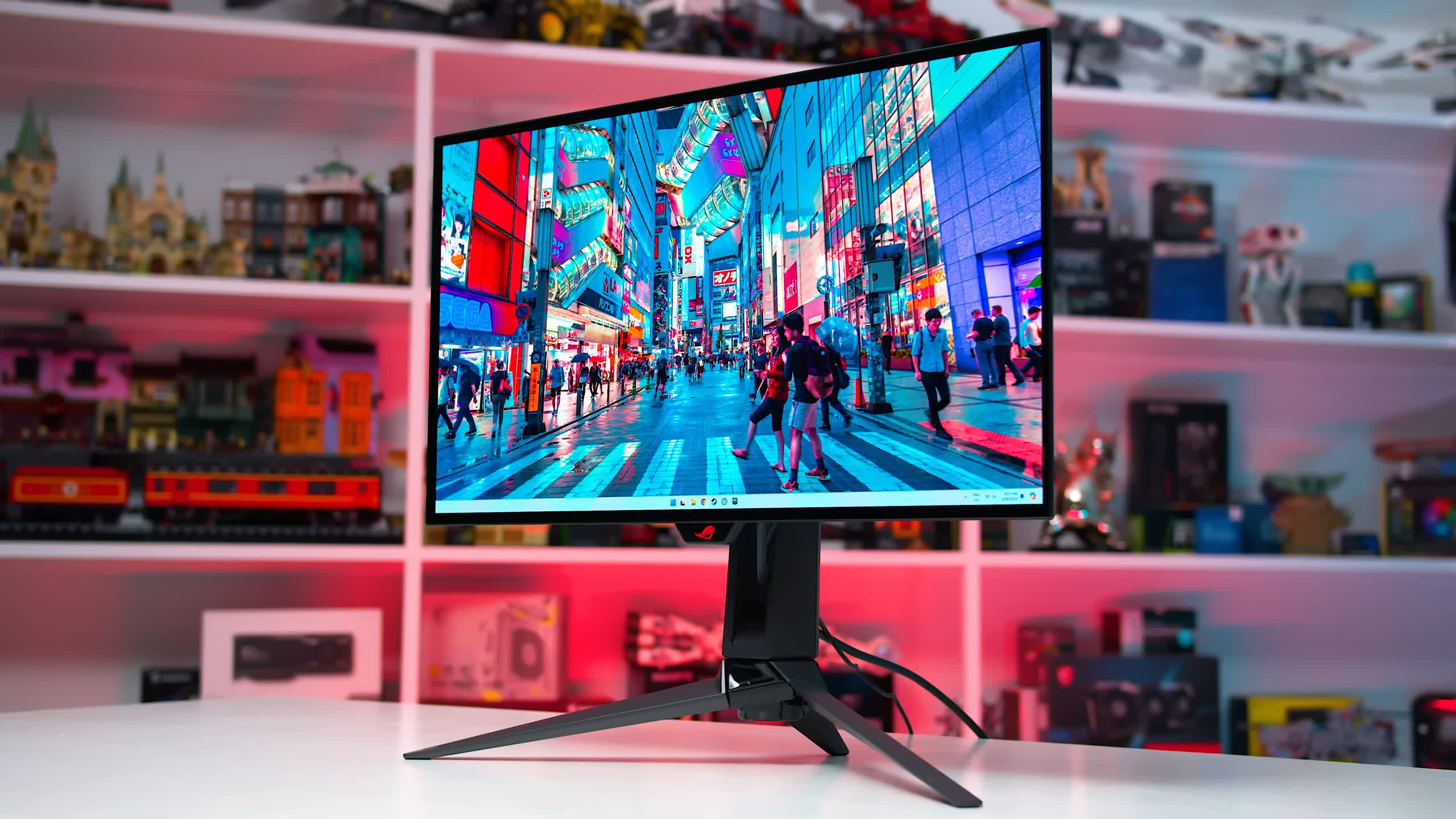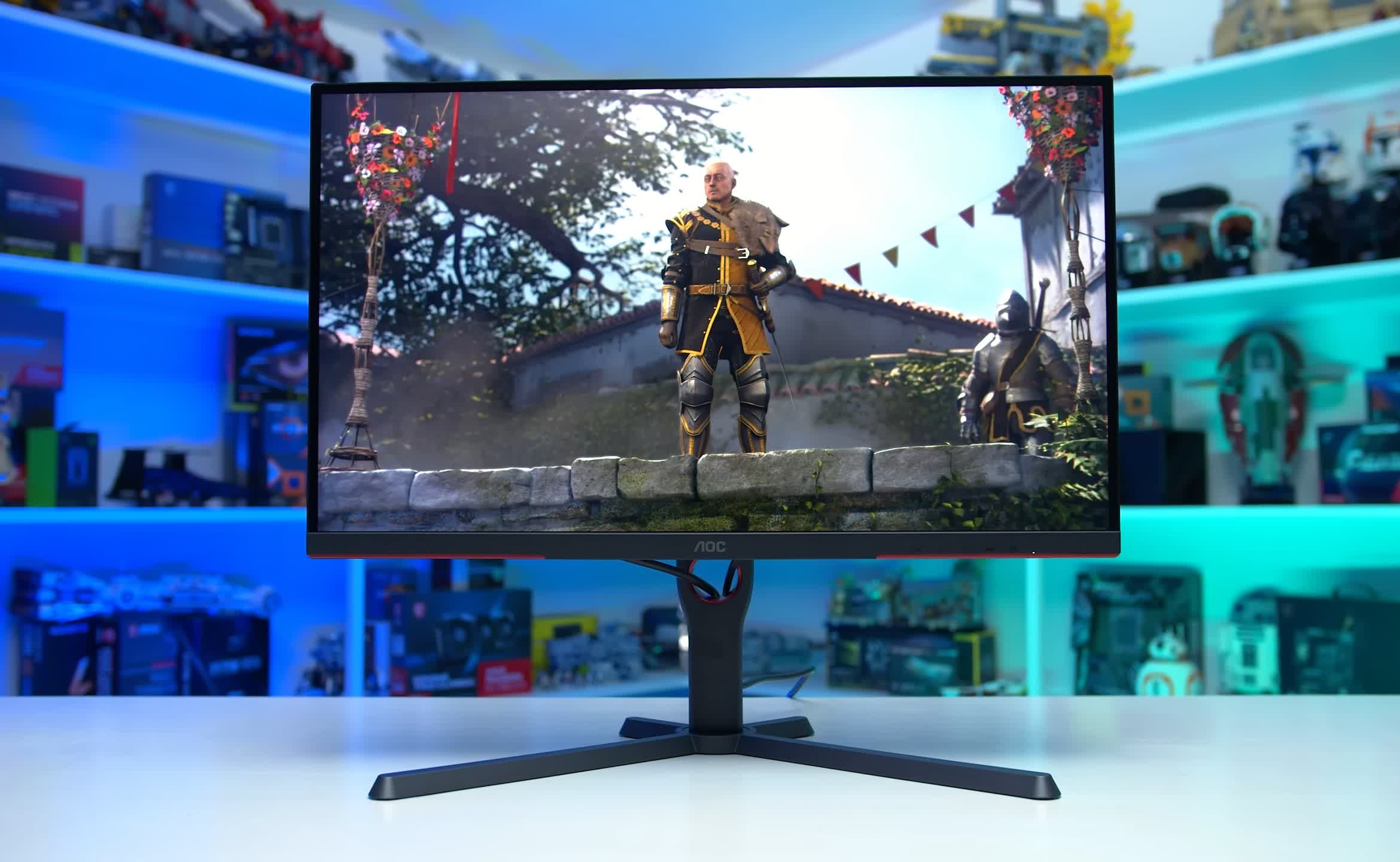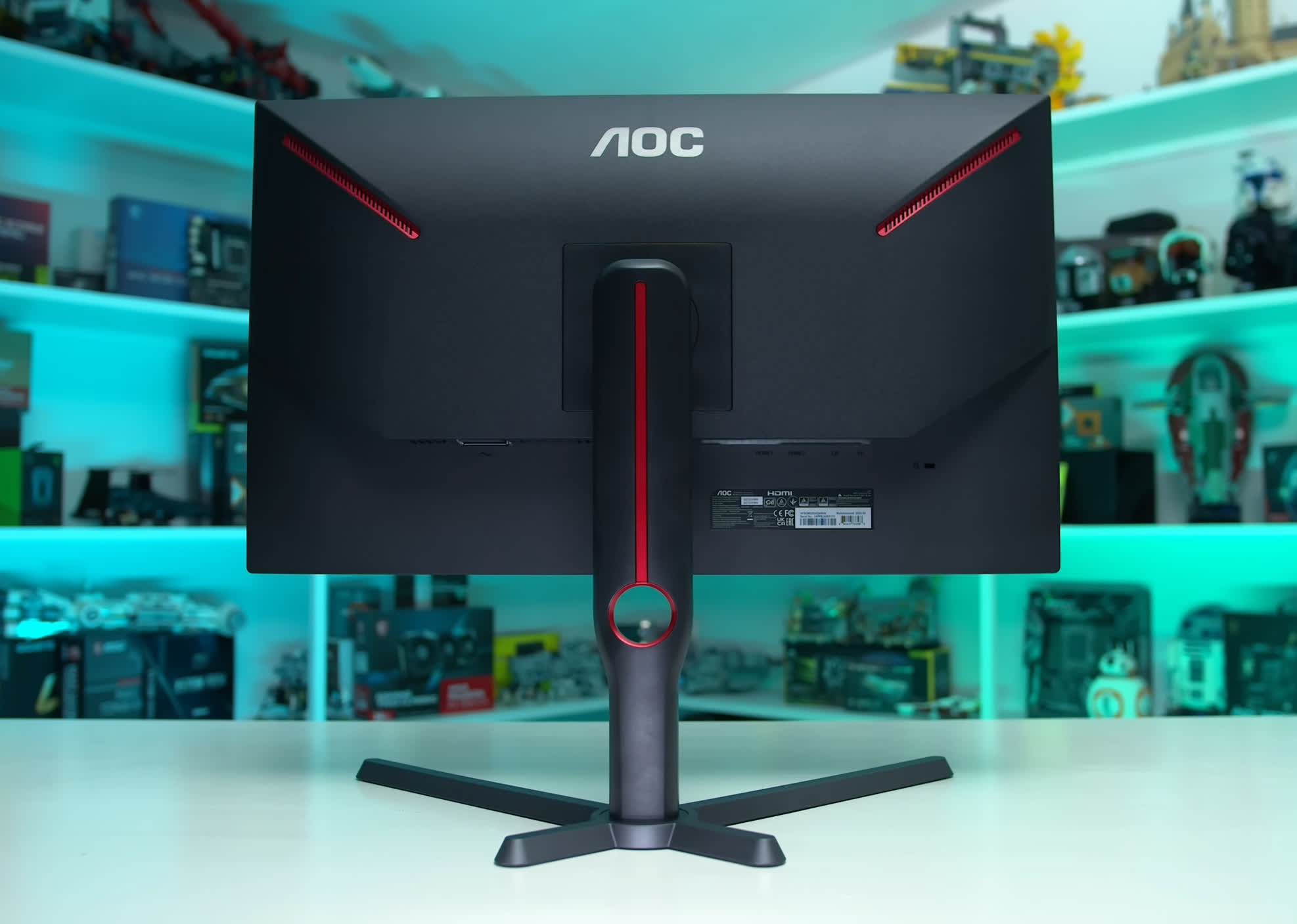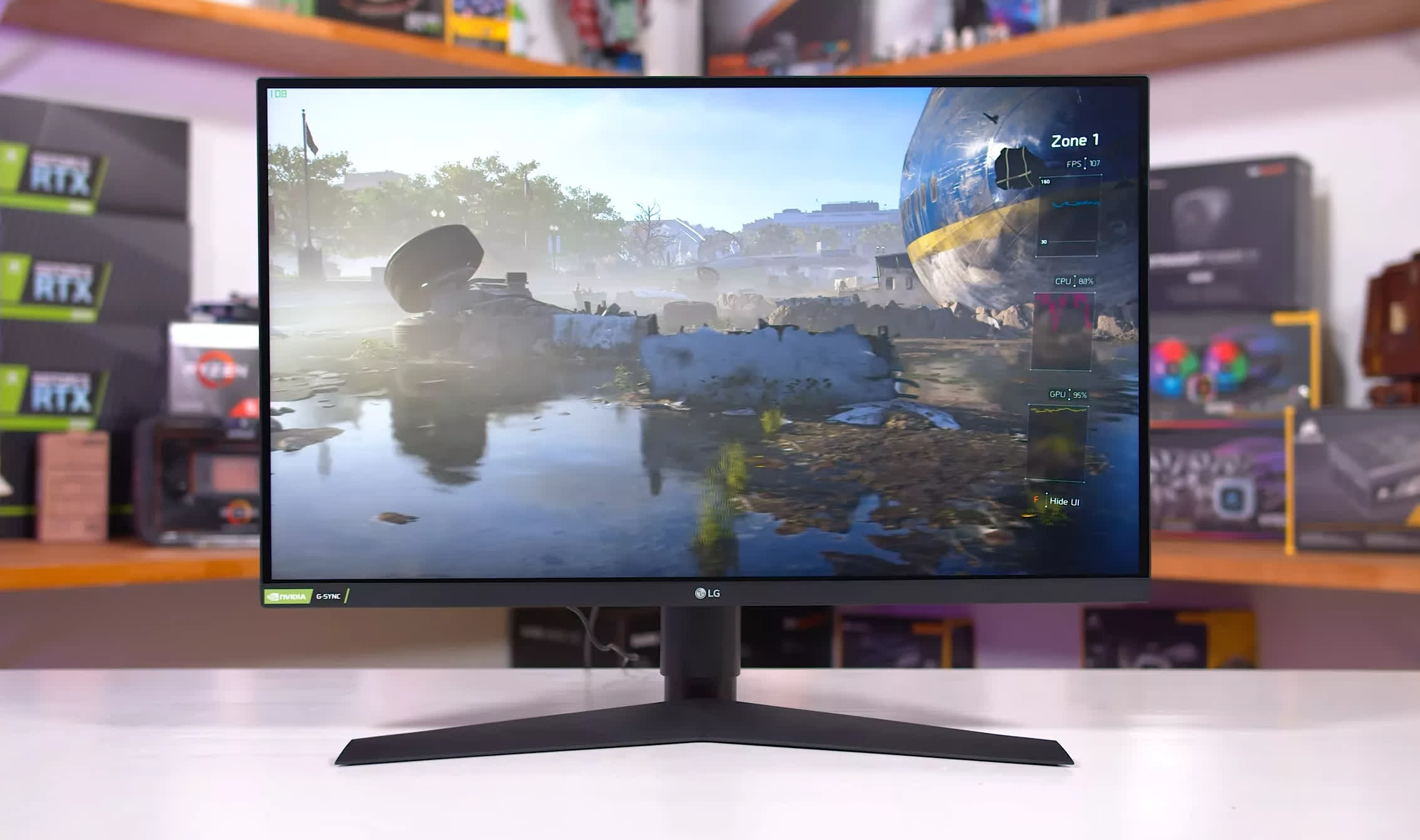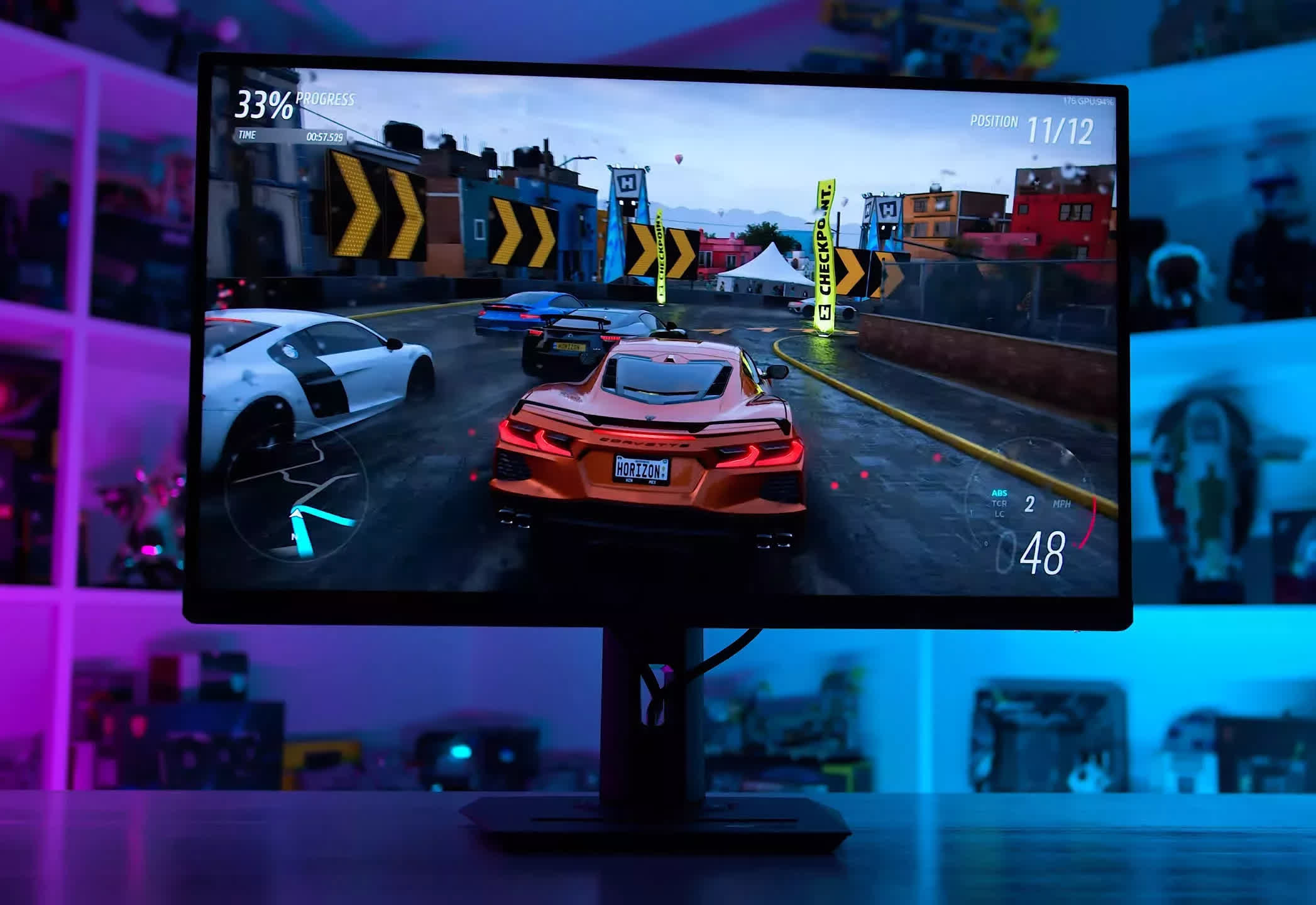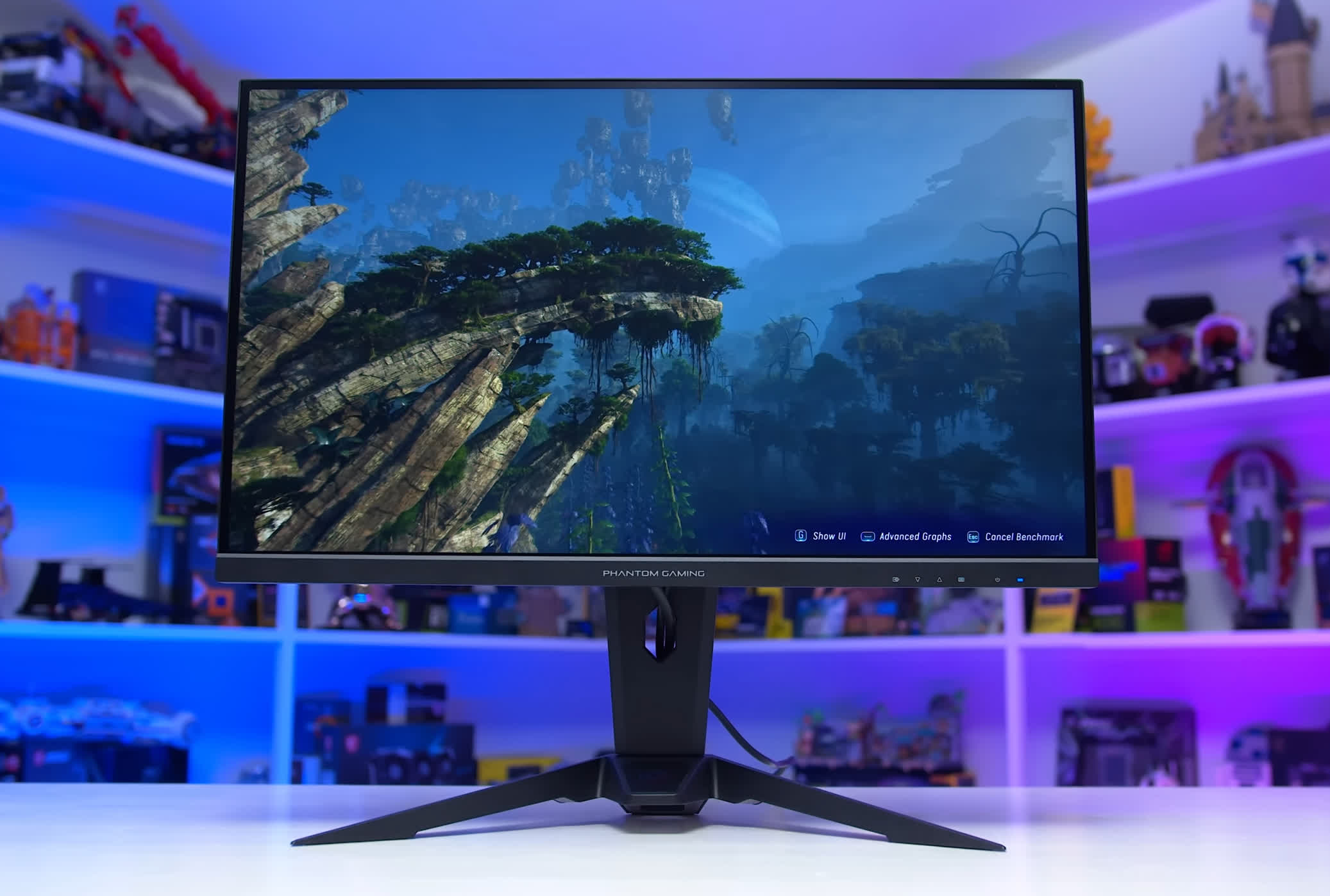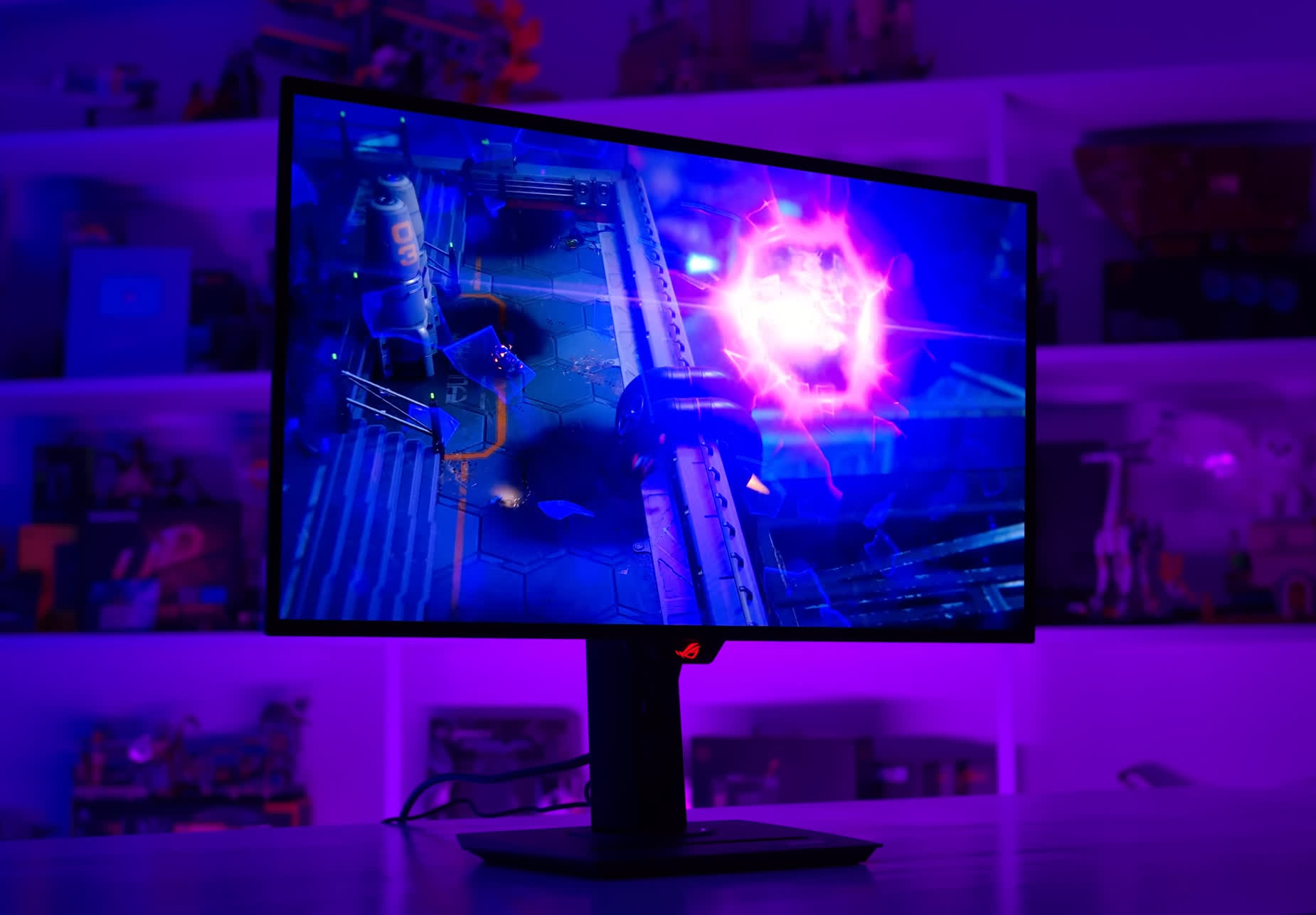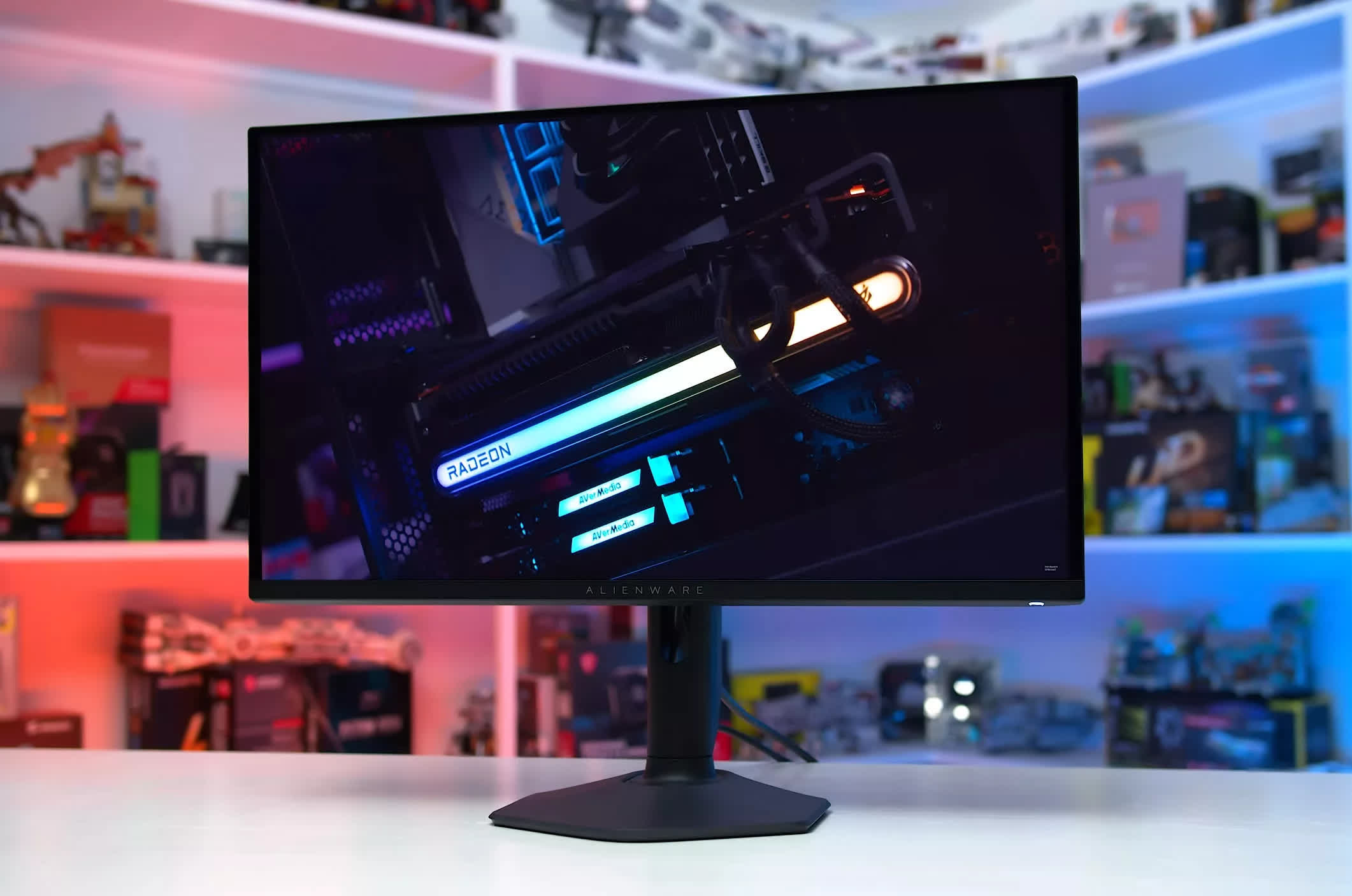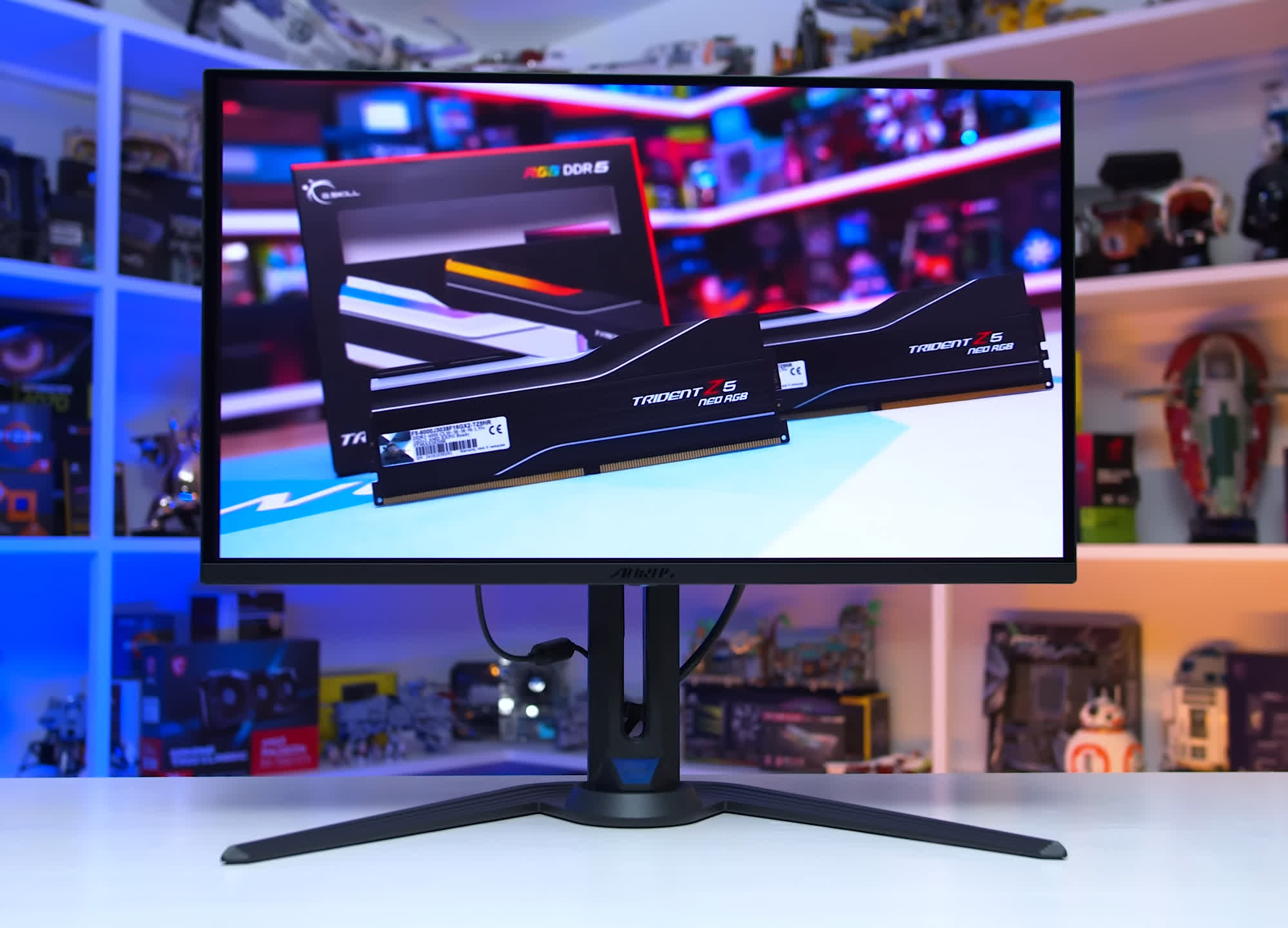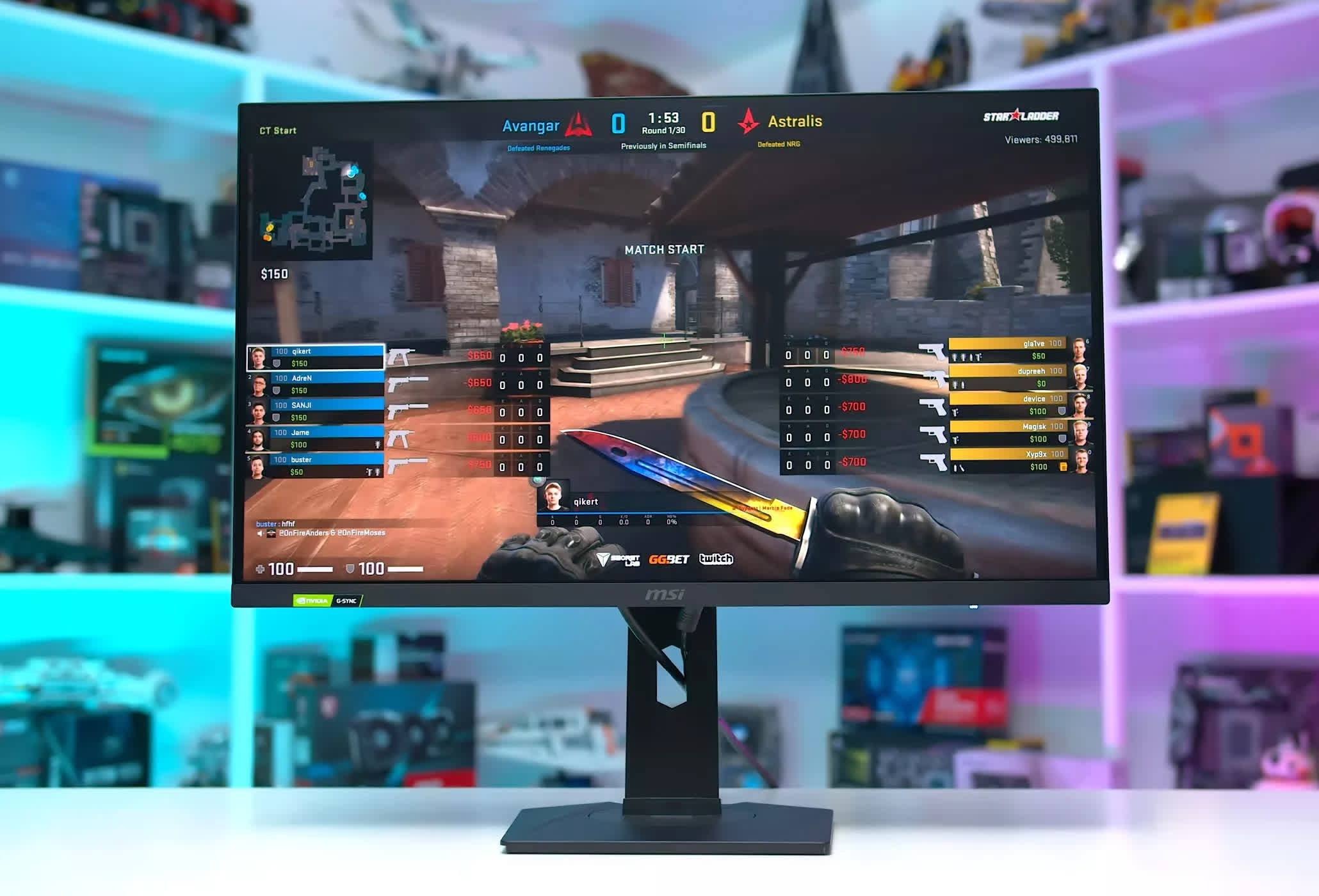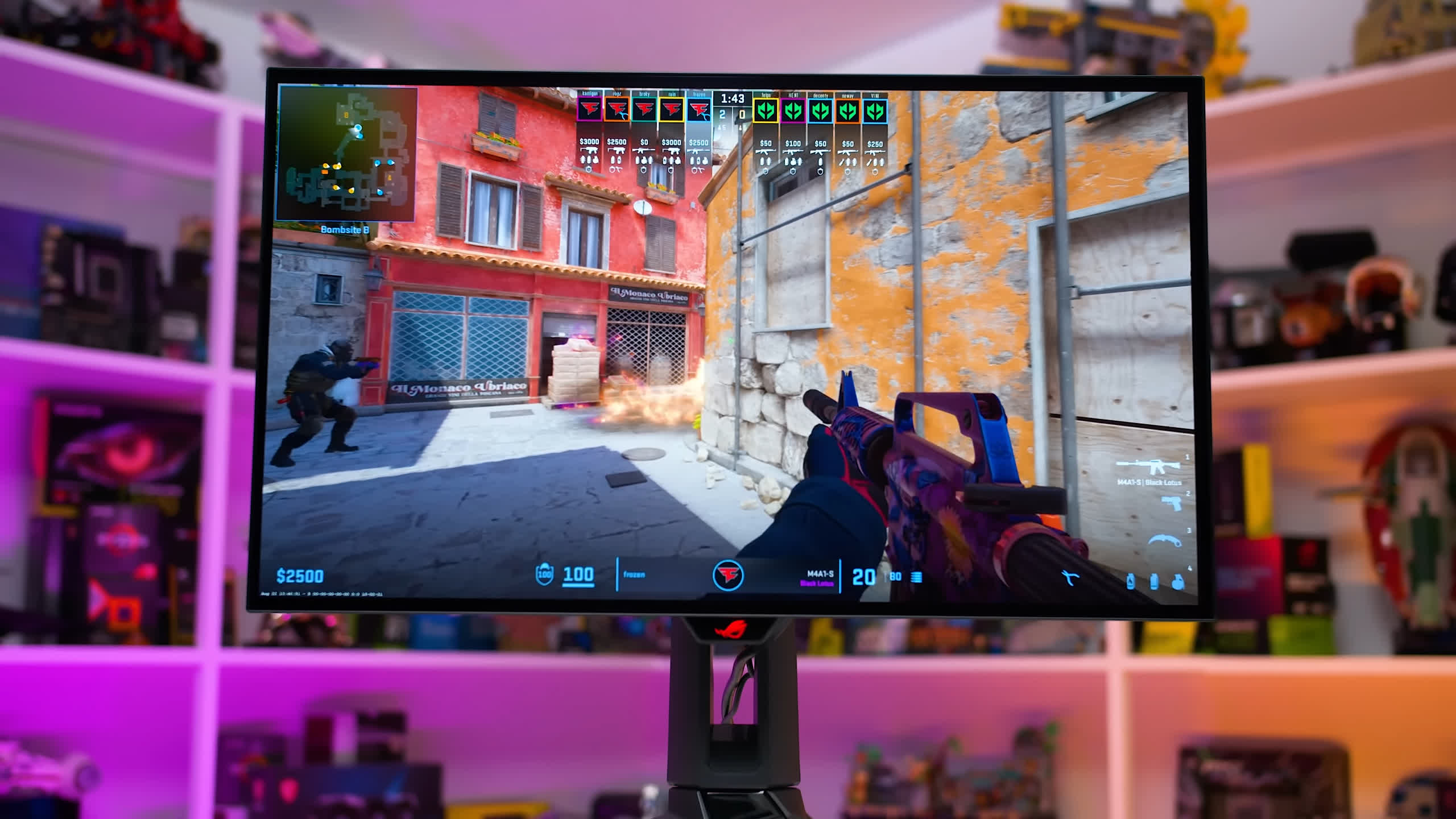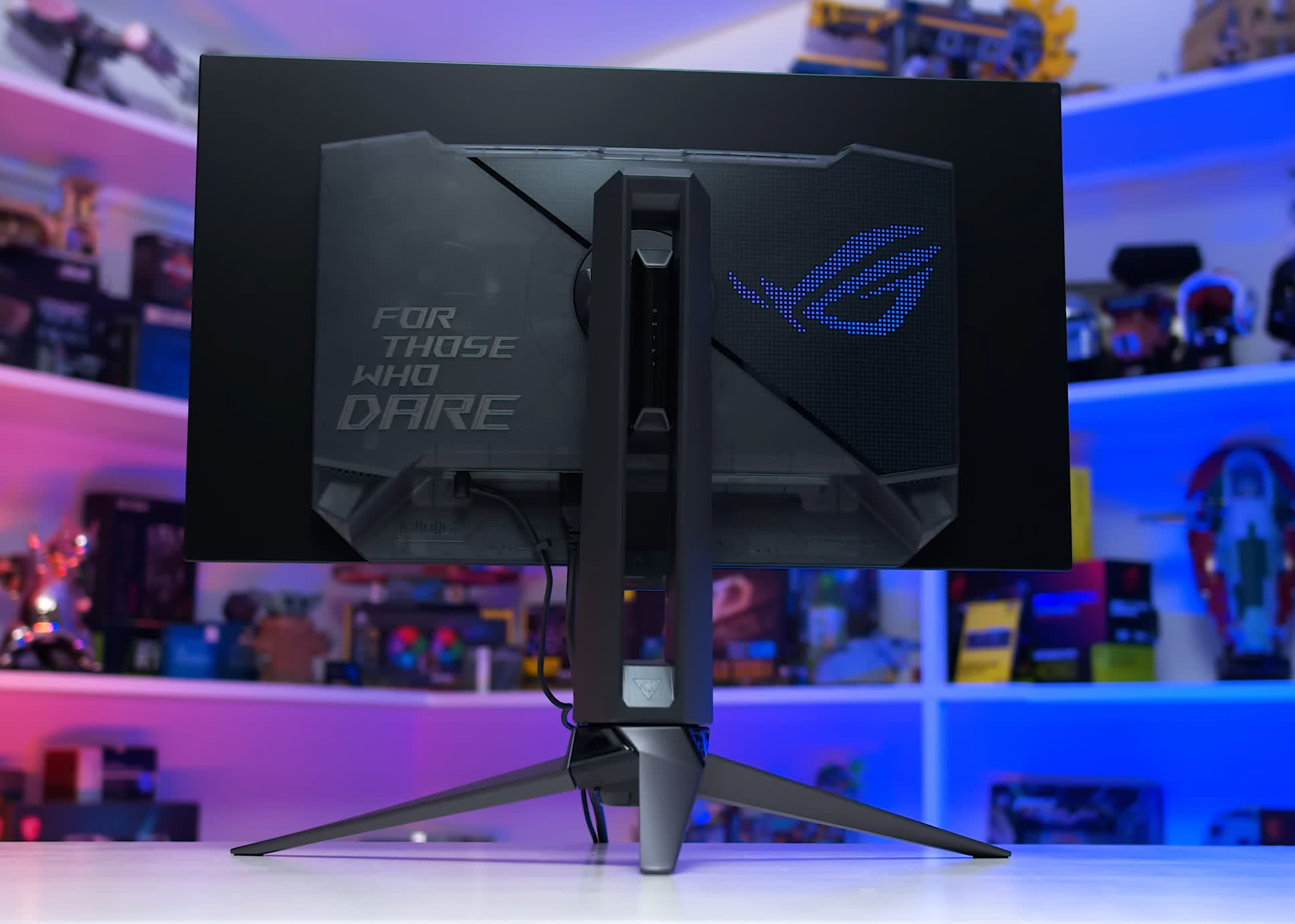Not long ago, high-refresh-rate 1440p monitors were considered a luxury. But fast-forward to 2025, and that dream display for fast-paced PC gaming has become the new normal. Prices have dropped, performance has surged, and for most PC gamers, 1440p now hits the sweet spot between value and performance.
Granted, the cost of new mid-range GPUs make the full equation hard to swallow, but most mainstream graphics cards can now handle 1440p gaming with ease. Games are optimized for it. Streaming platforms default to it. Even everyday productivity tasks feel noticeably better on a sharper, higher-resolution screen.
However, with tariffs looming and a volatile market, shopping for a monitor can feel like navigating a minefield. A flood of nearly identical models only makes it harder to figure out where your money is best spent. That's why we've broken things down into clear, tested categories – from budget beasts to high-refresh OLEDs worthy of completing your ultimate setup.
As always, our recommendations are based on products we've personally reviewed and tested. Most of the monitors mentioned here have dedicated, in-depth reviews available for those who want a closer look. Our picks strike a balance between real-world performance and real-world pricing. Whether you're spending under $250 or nearing a grand, this guide highlights the best 1440p gaming monitors you can buy right now.
- Best 1440p Mid-Refresh
- Budget 1440p Mid-Refresh
- Best 1440p High Refresh
- Budget 1440p High-Refresh
- Ultimate 1440p
Best 1440p Mid-Refresh
AOC Q27G3XMN 27" 180Hz

In our last 1440p monitor buying guide, we recommended the AOC Q27G3XMN as the best 1440p mid-refresh rate gaming monitor, and that continues to be the case into 2025. If you're looking for a display that's affordable, offers a solid resolution and refresh rate, and delivers excellent image quality for both SDR and HDR gaming, the Q27G3XMN remains a top choice – especially if you primarily play single-player titles.
The Q27G3XMN has a terrible name, but what it does pack is a 27-inch 1440p 180Hz VA LCD panel with a respectable 336-zone full-array local dimming backlight, offering true – albeit entry-level – HDR hardware capabilities.
All of this is available for around $270 or a little over €300, which is an impressively low price point. While competition in the budget HDR LCD market is growing, we have yet to test a model that matches this one in performance and value.
With 336 dimming zones, this monitor delivers much tighter dimming in HDR scenes than edge-lit models, offering improved contrast in real-world content, deeper blacks and shadows, and a high peak brightness exceeding 1,000 nits.
While it's not a flagship experience, it outperforms most LCD monitors in this price range. For HDR gaming on a 1440p monitor, proper local dimming is essential, which is why we strongly recommend the Q27G3XMN.
Most other low-cost HDR monitors we've tested have had numerous issues, such as poorly designed firmware that complicates switching between SDR and HDR modes, or calibration problems that make them nearly unusable. Fortunately, the AOC model avoids these pitfalls, though minor issues like scanlines and backlight zone flicker can occasionally appear.
That said, this isn't just an HDR monitor. Its 1440p 180Hz panel provides an excellent combination of resolution and refresh rate for modern games. Motion performance is decent for a VA LCD, with some of the best tuning we've seen outside of Samsung panels.
Dark-level smearing hasn't been entirely eliminated but is not overly distracting, and response times are generally acceptable. While it's not a particularly fast monitor, it performs well enough that it's not a dealbreaker – especially for those prioritizing an affordable, true HDR experience, which is ideal for story-driven games.
For everyone else, the AOC Q27G3XMN remains the best 1440p mid-refresh rate monitor and one of the top options under $300. Availability is also improving – when we last recommended this display, it wasn't available in Australia. Today, you can purchase it there for around $520 AUD. While not the most competitive price globally, it's still a worthwhile option.
It's also worth mentioning that an alternative version of this display is launching soon: the AOC Q27G40XMN. This model upgrades the backlight to 1,152 zones. We expect it to be slightly more expensive than the G3 version and to coexist with it on the market. While we haven't tested it yet, it's certainly one to watch.
Best Budget 1440p Mid-Refresh Gaming Monitor
MSI G274QPF-QD 27" 170 Hz

The price of budget 1440p monitors continues to fall, which is one of the many positive trends in the monitor market right now. Currently, the sweet spot for budget 1440p monitors is between $180 and $230. You won't find any HDR options in this range, but this is where solid SDR options can be found. Anything less and you will start to see big compromises, and anything more expensive starts to overlap with true HDR models and higher refresh rate displays.
A general rule of thumb in this category is to aim for a monitor priced at roughly 60% less than the cheapest OLED in your region. For example, if a 1440p OLED is available for $600, we wouldn't spend more than $240 on a budget LCD. In Australia, the most affordable OLEDs are around $850 AUD, so the target price for budget 1440p monitors would be approximately $340 AUD.
Here are some of the options we think are excellent buys:
MSI G274QPF-QD
If you can find the MSI G274QPF-QD within the golden price range, it's a standout. We've seen it as low as $230 recently. This is a 27-inch 1440p 170Hz IPS LCD that's well-balanced and features a wide color gamut thanks to its quantum dot layer. While its response time tuning isn't as strong as some alternatives, it generally looks excellent and offers great value.
LG 27GL83A
LG continues to deliver strong options for budget-conscious buyers, though pricing tends to fluctuate significantly between regions and even week to week.
At the moment, the LG 27GL83A can be found for just $190, which is a fantastic deal for what is now an older panel that still holds up well in the sub-$200 market. In Australia, the 27GP850 is one of the most affordable models and remains competitive, with strong response times and excellent sRGB mode calibration.
However, its contrast ratio is on the lower side. Other similar variants worth watching include the 27GL850 and 27GP83B – all are classic 27-inch 1440p IPS displays with refresh rates between 144Hz and 180Hz.
Asus ROG Strix XG27ACS
The Asus ROG Strix XG27ACS is another strong option. It features a 1440p 180Hz IPS LCD with variable overdrive, offering some of the best motion performance tuning in this category, along with vibrant color quality. However, its regular price is a bit high, typically around $260.
We've seen it go on sale for $200, and at that price, it's an excellent deal. Similarly in Australia, we wouldn't recommend it at $440, but its current price of $370 makes it very appealing.
Asrock PG27QFT2A
The Asrock PG27QFT2A is another model to keep in mind, often showing up as one of the cheapest options. It's the most basic of the 1440p gaming monitors, lacking features like an sRGB mode or a KVM switch that are often found in more premium models. It does offer decent brightness, good viewing angles, and an excellent contrast ratio for a 180Hz IPS LCD, though its response time tuning is weaker than the other monitors we've recommended.
Choose this model if you want something simple and functional for gaming, and aren't concerned with top-tier performance or color accuracy.
There are more low-cost LCDs we're planning to test throughout 2025, so check back later in the year for additional recommendations. We're cautious about recommending anything in this category without hands-on testing, as there are occasional disappointments – even among monitors using the same panels as higher-performing models. Hopefully, we've provided enough strong options for now.
Best 1440p High Refresh Gaming Monitors
Asus ROG Strix OLED XG27AQDMG 27" 240 Hz

If you're looking for a great high refresh rate 1440p gaming monitor – or just an excellent gaming monitor in general – look no further than today's 27-inch OLED models. Available in several variations, OLED typically delivers the best performance in this category, and with prices continuing to fall, there's never been a better time to jump into the OLED ecosystem.
Our favorite choice remains the Asus XG27AQDMG, a glossy WOLED monitor featuring a 27-inch panel, 1440p resolution, and 240Hz refresh rate with adaptive sync. As an OLED, it offers individual pixel control and elite response times, making it especially well-suited to HDR gaming. Its transition speeds at 240Hz produce motion clarity roughly equivalent to 360Hz LCDs, and these benefits extend to lower refresh rates too – making it highly versatile for both single-player and multiplayer gaming.
HDR performance is excellent, particularly for immersive single-player experiences. Expect deep, true blacks and precise highlight control that delivers clean HDR visuals without zone artifacts. This WOLED also provides decent brightness for both high and low APL content, does not dim in bright scenes, and uses a glossy coating that maintains rich black levels without graininess.
We'd recommend this monitor to most buyers, but only if the pricing in your region makes sense and it's in the ballpark of QD-OLED alternatives.
Right now, it's priced just under $700, while the cheapest QD-OLEDs range from $630 to $680. That's reasonable for a monitor that, overall, may slightly outperform the QD-OLED options. However, in Australia, the XG27AQDMG sits at $1,500, while QD-OLEDs are available for under $1,000 – a gap that's simply too large, effectively eliminating this option.
For QD-OLED models, there are two main refresh rate tiers: 240Hz and 360Hz. Both use essentially the same panel and share most characteristics. Compared to the XG27AQDMG, QD-OLED displays have some pros and cons. The 360Hz variants offer better motion clarity, but this only applies when gaming above 240Hz.
For lower refresh rate gaming – common in single-player titles – the added refresh rate doesn't provide much benefit. So, only consider 360Hz models if you'll take advantage of that capability or if they happen to be the most affordable in your region. QD-OLED displays also offer higher color volume, better text clarity at this resolution, and increased peak brightness in certain scenes.
Dell Alienware AW2725DF
It's not a clear-cut decision between QD-OLED and WOLED, and our preference for glossy WOLED is only a mild one. There are many reasons to choose QD-OLED, and the good news is that all the variants we've tested have been excellent – making it hard to go wrong.
These include the MSI MPG 271QRX, the Dell Alienware AW2725DF, the Gigabyte FO27Q3, and the Asus ROG Strix XG27ACDNG. All use the same 360Hz panel, so core performance is nearly identical. Typically, there's a 240Hz variant of each that's slightly cheaper. For example, the MSI 271QPX E2 is a bit cheaper than the 271QRX, and Gigabyte offers the FO27Q2 as a variant of the FO27Q3.
Among the models we've tested:
- Asus and Gigabyte include a "boosted brightness" HDR setting, though it's not a must-have.
- Asus supports black frame insertion, a niche feature.
- MSI offers the most advanced OLED care controls.
- Dell provides the best factory calibration but, like Gigabyte, lacks robust USB-C power delivery.
Your choice will likely come down to the features you value most, and of course, pricing.
If no particular feature stands out and you're unsure which to choose, just go with the most affordable. The Alienware AW2725DF is a great option right now at $650 in the US – essentially the same price as many 240Hz QD-OLEDs but with a higher 360Hz refresh rate.
However, its regular $900 price isn't nearly as compelling, so we'd wait for a sale. Also, keep an eye on MSI's 240Hz variants, though prices have recently climbed from $600 to around $650.
Gigabyte Aorus FO27Q3
In Australia, the 240Hz QD-OLEDs tend to be particularly attractive, often priced between $800 and $900, which currently makes them the obvious pick. We'll be testing several of the latest models soon. These monitors also offer strong value in Europe, with models like the Gigabyte MO27Q2 available for under €600.
The AW2725DF is also worth considering in Europe if you're willing to spend a bit more for 360Hz performance. While we haven't tested every variant, QD-OLEDs are so close in performance that taking a chance on an untested model is likely safe.
That said, we generally recommend OLED displays primarily for content consumption – gaming or watching videos. There is a risk of permanent burn-in with OLED panels, especially from static content often seen in productivity apps and web browsing. For mixed-use scenarios or heavy productivity tasks, it's difficult to recommend OLED right now.
We'd also steer clear of first-gen 240Hz WOLEDs with matte panels. These usually offer lower brightness than the XG27AQDMG and are no longer competitively priced. Often, they cost about the same as QD-OLEDs while delivering an inferior experience.
Best Budget High-Refresh 1440p Gaming
LG 27GR83Q 27" 240Hz
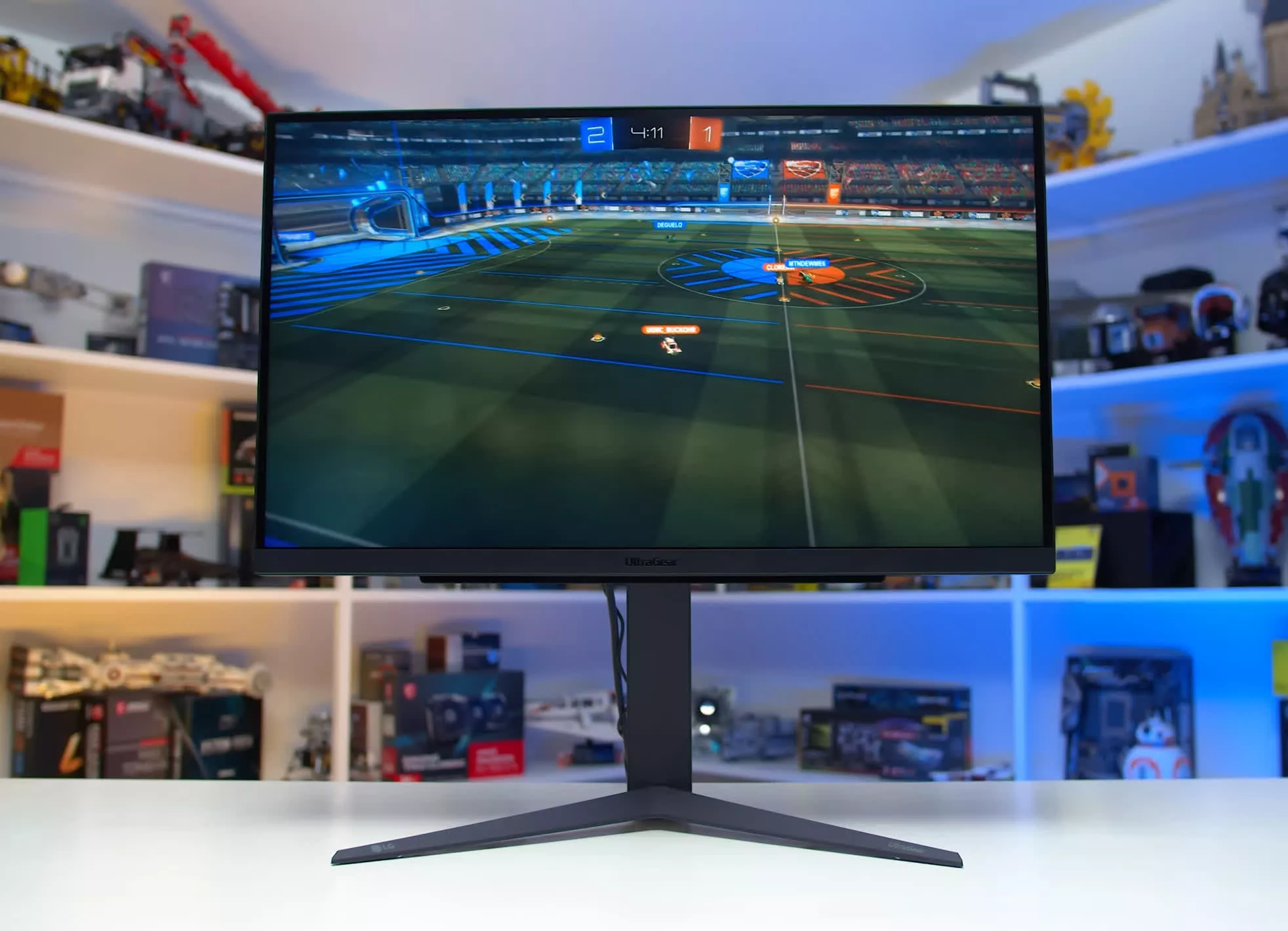
You might be looking for a 1440p high refresh rate monitor but, for various reasons, not want an OLED. Maybe they're too expensive, you're concerned about the risk of burn-in, or you simply don't need the specific advantages OLED offers. In that case, there are still some solid LCD options available – provided you're not paying a premium for them.
Our general rule of thumb is that you should aim for a 30 – 40% discount when opting for a 1440p 240Hz LCD over an OLED. This is because LCDs at the same refresh rate offer inferior motion clarity and usually lack true HDR functionality. While these LCDs can still be great products, reduced performance and fewer features should come with a lower price tag, so don't be tempted to overpay.
With that in mind, if the cheapest 240Hz OLEDs in your region cost around $600, then the target price for a 1440p 240Hz LCD should be roughly $360 or less. The good news is there are a few worthwhile options that meet this criterion – specifically the LG 27GR83Q, Gigabyte M27Q-X and MSI G274QPX. All three are 27-inch 1440p 240Hz IPS LCDs with similar overall performance.
Among them, the LG model generally stands out as the best, offering slightly better response time tuning, improved color accuracy, and more extensive calibration options. The MSI and Gigabyte models are closely matched: the Gigabyte delivers marginally better motion clarity, while the MSI provides a wider color gamut and higher contrast ratio. Overall, we believe the LG model justifies a 10 – 15% premium.
MSI G274QPX
The best choice among these models depends on regional pricing. In the US right now, the MSI model is somewhat overpriced and has increased in cost recently, while the M27Q-X is on sale and the LG 27GR83Q remains reasonably priced.
In Australia, the G274QPX currently offers the best value. In Europe, availability can vary, but the LG model tends to be competitively positioned.
Ultimate 1440p Gaming
Asus ROG Swift OLED PG27AQDP 27" 480Hz
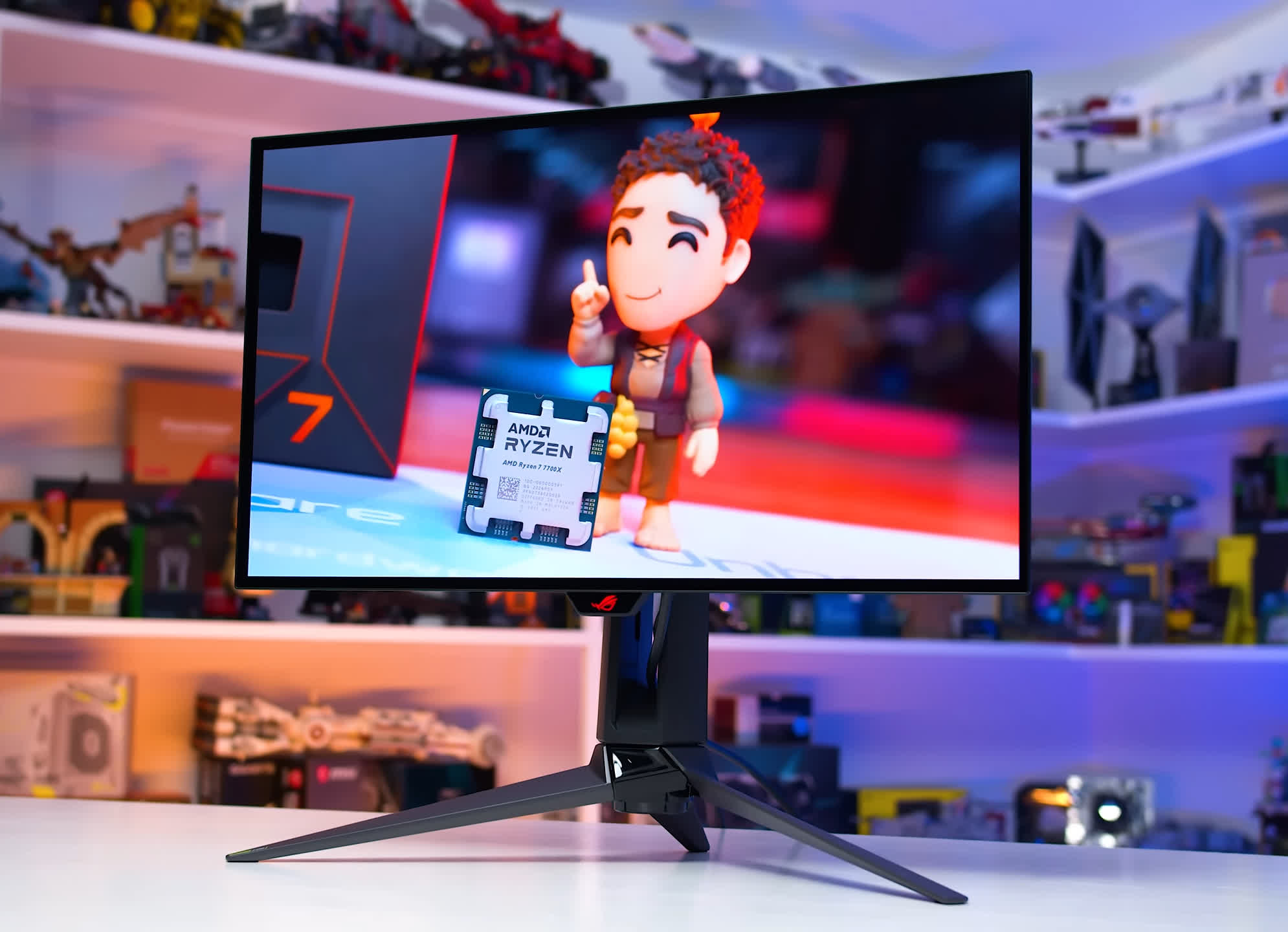
If money is no object and you want the absolute best 1440p gaming monitor available, the Asus ROG Swift OLED PG27AQDP continues to be the top choice.
This 27-inch 480Hz WOLED is a powerhouse, excelling at everything – whether you're chasing the most immersive single-player HDR experience or the fastest motion and lowest input lag for competitive multiplayer gaming. In nearly every category we assess, the PG27AQDP comes out on top. However, it carries a steep price tag of around $1,000, and there has been no significant price movement over the past six months.
The reason to buy the PG27AQDP is for a hassle-free, ultra-clear multiplayer experience. Outside of niche, backlight-strobed LCDs, nothing matches the motion clarity of a 480Hz OLED. This Asus model achieves that clarity while still supporting full adaptive sync and HDR, making it the best all-round solution for competitive gamers.
In addition to being an excellent display for competitive gamers, the PG27AQDP is incredibly versatile, producing top tier results across all types of games. For those who enjoy both multiplayer and single-player titles, this OLED is ideal thanks to its solid 1440p resolution, exceptional HDR performance with per-pixel illumination, and outstanding contrast ratio.
It's also one of the brightest OLEDs we've tested in HDR content, slightly outperforming other models and avoiding the panel dimming issues common with QD-OLED displays. The improved subpixel structure over first-gen WOLEDs enhances text clarity, and Asus' anti-flicker implementation appears to work quite well.
That said, the monitor uses a matte screen coating, which isn't a favorite among OLED enthusiasts. However, if that's the most notable drawback, it speaks volumes about the strength of everything else this display offers.
While we believe this is the best 1440p gaming monitor currently available, there are valid reasons some users may want to skip it. Single-player gamers typically won't push frame rates much beyond 240 FPS, meaning the benefits of a 480Hz refresh rate may go unused. In that case, 240Hz WOLEDs or 360Hz QD-OLEDs will deliver nearly identical motion clarity and HDR performance – at prices $200 – 400 lower. Right now, the best value lies in those lower refresh rate models. But if you demand the absolute best, the PG27AQDP is it.
There's also another reason to consider waiting: 500Hz 1440p QD-OLED monitors are expected to launch within the next couple of months.
These will introduce much-needed competition to the ultra-high refresh rate segment and could drive prices down. QD-OLED also brings different performance characteristics that some users may prefer. Still, we expect the PG27AQDP to remain highly competitive given its outstanding overall performance. Either way, it may be worth waiting a short while to see how the high-end market evolves.
